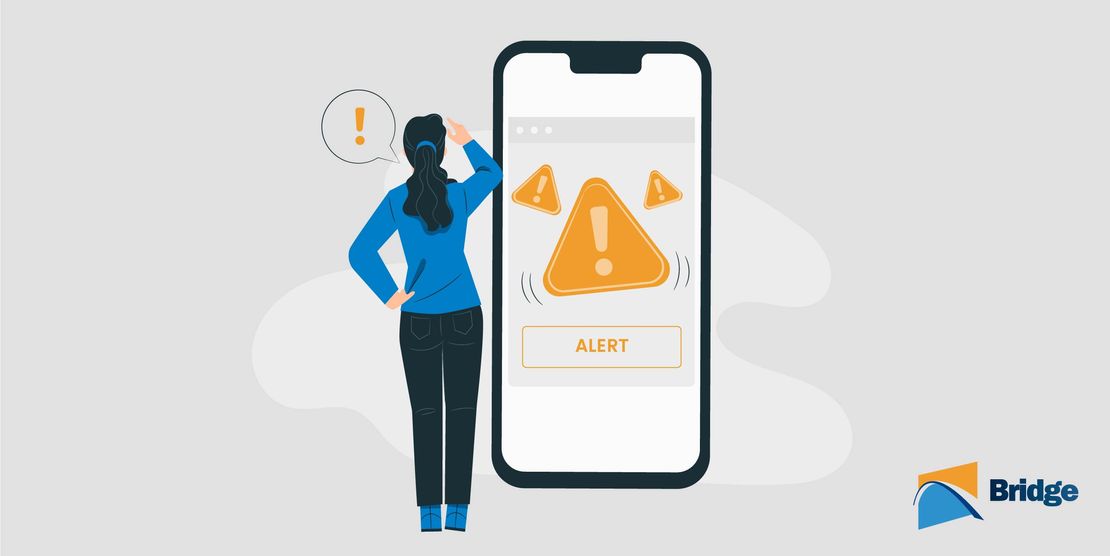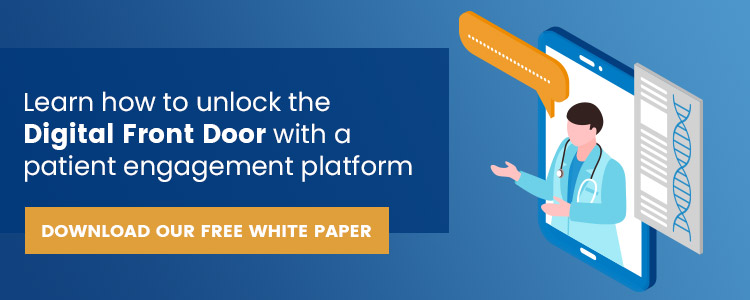Lackluster UX Of EHRs Has Carried Over To Healthcare Patient Engagement Solutions
- Imogen Goodman
- February 15, 2021

In most tech-based industries, the demand[¹] for good User Interface (UI) / User Experience (UX) designers has in recent years been growing at a rapid pace. A recent LinkedIn report[²] found UX to be one of the top-five in-demand skills in 2020, and with design factors set to influence the ranking of businesses on Google from 2021, this trend looks set to continue well into the future.
But in spite of UX’s seemingly unstoppable ascent in the modern world of tech, the healthcare sector continues to lag behind, with traditional healthcare vendors repeatedly overlooking this crucial aspect of development. While industries from fintech to e-commerce put UX at the heart of their businesses, user experience continues to be sidelined in healthcare patient engagement solutions, where it could play a vital role in improving patient health outcomes.
According to John Deutsch, founder, and CEO of Bridge Patient Portal, larger Integrated Delivery Networks (IDNs) and traditional health IT vendors still appear to run their operations on barebones UX staff when compared to health tech startups and basically all other tech businesses.
“There’s a significant difference between the focus on UX in new healthcare startups compared to established health IT vendors such as Electronic Health Record (EHR), Revenue Cycle Management (RCM), or Practice Management (PM) vendors,” he explained. “This has left us in a frustrating situation where the majority of healthcare organizations are relying on patient-facing solutions from legacy EHR software that may be decades old – with no discernible focus on UX – combined with hastily acquired Software as a Service (SaaS) products from the new generation of healthcare startups that, while delivering better UX, tend to have limited functionality.”
To make matters worse, with established vendors now developing their own healthcare patient engagement solutions, the poor UX of the clinician-facing era of digital healthcare has now carried over to the realm of patient-facing patient portal solutions, creating a confusing, clunky and outmoded digital experience for patients as well as providers.
Why hasn’t UX become a priority in the healthcare sector?
According to Deutsch, the problem of poor UX in healthcare dates back to the original EHRs, many of which were developed decades ago at a time when there was little focus on intuitive, user-friendly design. Due to the immense complexity of these systems – often requiring more than 10x the functionality of a conventional banking app – most vendors poured all their resources into pure functionality development, with little consideration for UX.
“In defense of the EHR vendor, UX just simply wasn’t a priority for most tech businesses until around a decade ago, so in many ways what these health IT vendors were doing was entirely in line with the tech sector as a whole,” said Deutsch. “What this does mean, however, is that a lot of EHR software developed in the late 1990s or early 2000s just doesn’t offer what today’s consumers have come to expect and are struggling to adapt to the changing market.”
Since this time, these antiquated systems have tended to remain in use among major provider groups, with clinicians and administrators putting up with poor usability due to the sheer magnitude of changing to a new system and the dearth of other options.
In the last decade or so, however, the United States’ Meaningful Use legislation has encouraged many healthcare organizations to rapidly adopt new patient-facing tools – often in an ad-hoc manner. On occasion, this has involved relying on the healthcare patient engagement solutions offered by their existing EHR, PM, and RCM vendors, while in other instances, healthcare organizations have attempted to stay ahead of the curve by adopting patient-facing digital tools from a new generation of healthcare tech startups.
Unfortunately, though these new startups tend to offer improved UX compared to established health-IT vendors, the solutions offered are still immature and often represent an incomplete and piecemeal approach to patient engagement, says Deutsch.
“Solutions like telehealth, messaging, and scheduling seem to be the driving force between a lot of these new startups – but that doesn’t begin to represent the kind of rich functionality required by modern patients,” he explained. “Furthermore, it creates a scenario in which the healthcare organization accumulates a patchwork of healthcare patient engagement solutions that only offer a few of these functions, while their EHR systems continue to be clunky and antiquated.”
According to Deutsch, UX design continues to be an “afterthought” for the 80% of EHRs that now offer their own patient portal solutions. To complete this perfect storm, today’s most talented UI/UX designers are unlikely to be drawn to the healthcare industry thanks to comparatively poor compensation and conceptions about its conservatism.
The consequences of poor UX in healthcare patient engagement solutions
The continued undervaluing of UX design in healthcare continues to have a serious impact on the quality of patient care. The piecemeal landscape can be confusing and frustrating for patients, leading to a poor take-up of digital services compared to sectors such as banking.
Of even greater concern is the fact that poor UX can also have a negative effect on patient safety: one study[³] published in the Journal of the American Medical Informatics Association® found, for example, that the poor usability of digital ordering systems for certain medications could lead to severe dosing errors and even hospitalizations.
Other risk factors for patients could include confusing clinical instructions on apps or patient portals, poor communication about proper adherence, and the difficulty of accessing telehealth tools when they are most urgently required.
Meanwhile, on the business side, patients are increasingly coming to expect more digital services[⁴] from their providers. This means that, if their current providers fail to offer adequate healthcare patient engagement solutions with great UX design, they may seek out new providers that are better able to meet their needs.
“The consumerization of healthcare has made people a lot more demanding of their healthcare providers,” said Deutsch. “Patients are now willing to say, I need this, and if I don’t get this, I’m going to go elsewhere. Of course, this is yet another reason that healthcare organizations need to think very carefully about the kind of UX their digital solutions offer, and finally start taking this seriously.”
DISCLAIMER: All product and company names are trademarks™ or registered® trademarks of their respective holders. Bridge Patient Portal is not affiliated, endorsed, or sponsored in any way to the service providers mentioned in this article.
- Jewell, L. (2019). Want a career in UX? Why now is the time to make the move. [online] UX Design Institute. Available at: https://www.uxdesigninstitute.com/blog/want-a-career-in-ux/.
- Linkedin.com. (2020). The Most In-Demand Hard and Soft Skills of 2020. [online] Available at: https://business.linkedin.com/talent-solutions/blog/trends-and-research/2020/most-in-demand-hard-and-soft-skills.
- Horsky, J., Kuperman, G.J. and Patel, V.L. (2005). Comprehensive Analysis of a Medication Dosing Error Related to CPOE: Table 1. Journal of the American Medical Informatics Association, 12(4), pp.377–382.
- Accenture 2019 Digital Health Consumer Survey. [online] accenture.com. Available at:https://www.accenture.com/_acnmedia/pdf-94/accenture-2019-digital-health-consumer-survey.pdf
